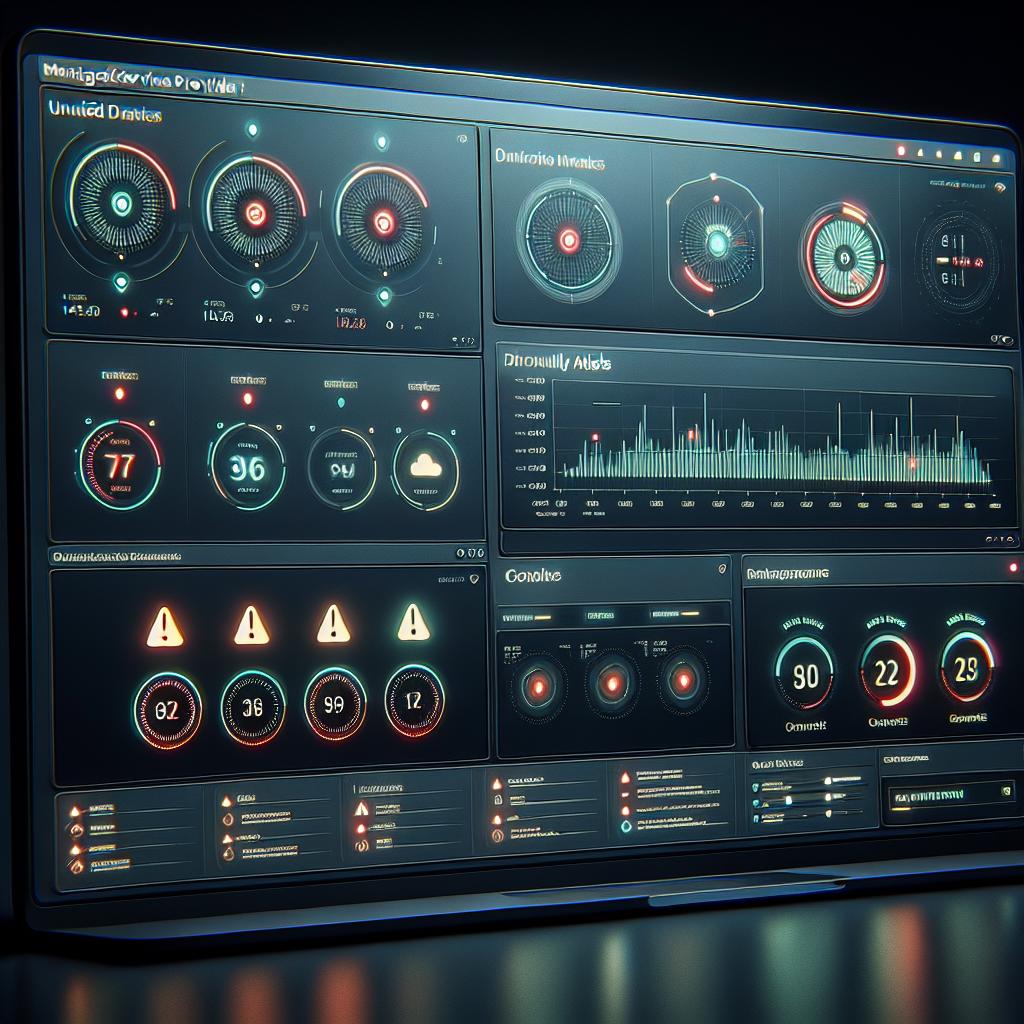In this scenario, let’s walk through a realistic example that demonstrates the time savings you can achieve by using the Quantum Network Monitor Assistant for network monitoring tasks, compared to a more traditional, manual approach.
Let’s imagine a network administrator, Alex, who wants to monitor three critical servers—web01.example.com, mail01.example.com, and db01.example.com—for uptime and basic service health. Alex will use the Quantum Network Monitor Assistant to set everything up, gather live data, and adjust monitoring—all through conversational AI.
Introduction: The Challenge of Traditional Monitoring
Traditionally, Alex would spend time:
- Navigating multiple monitoring tool interfaces.
- Manually entering server details into a dashboard.
- Configuring alert thresholds and periodic health checks.
- Collecting and exporting historical uptime statistics.
Each of those tasks usually requires reading documentation, locating the right menu, and lots of clicking or typing.
With Quantum Network Monitor Assistant, let’s see how Alex can accomplish all these steps in a fraction of the time with just a few instructions.
Step 1: Rapidly Adding Multiple Hosts
User:
I want to monitor three servers: web01.example.com (HTTP), mail01.example.com (SMTP), and db01.example.com (ICMP). Please set them up for monitoring.
Assistant:
Great! I’ll quickly configure monitoring for all three servers.
We’ll use the add_host function, specifying the address and appropriate endpoint for each server.
Function calls:
```json
{
"name": "add_host",
"arguments": {
"detail_response": true,
"address": "web01.example.com",
"endpoint": "http",
"email": "[email protected]"
}
}
{
"name": "add_host",
"arguments": {
"detail_response": true,
"address": "mail01.example.com",
"endpoint": "smtp",
"email": "[email protected]"
}
}
{
"name": "add_host",
"arguments": {
"detail_response": true,
"address": "db01.example.com",
"endpoint": "icmp",
"email": "[email protected]"
}
}
With just a few API calls, Alex’s servers are added to active monitoring—no GUIs, no manual typing into web forms.
Step 2: Instantly Retrieving Status and Historical Data
User:
Can you show me the latest status and response times for all three servers?
Assistant:
Of course! Let’s fetch the latest monitored data for these hosts.
Function call:
```json
```json
{
"name": "get_host_data",
"arguments": {
"detail_response": true,
"dataset_id": 0,
"address": "web01.example.com"
}
}
{
"name": "get_host_data",
"arguments": {
"detail_response": true,
"dataset_id": 0,
"address": "mail01.example.com"
}
}
{
"name": "get_host_data",
"arguments": {
"detail_response": true,
"dataset_id": 0,
"address": "db01.example.com"
}
}
The monitoring assistant collates results in moments, presenting up-to-date availability and latency numbers. Traditionally, Alex would search dashboard tables or run CLI scripts to gather the same info.
Step 3: Adjusting Monitoring Parameters On The Fly
User:
Our database server should be pinged every 30 seconds for better granularity. Can you update the timeout and confirm?
Assistant:
Absolutely. I’ll update the ICMP monitoring interval for db01.example.com.
Function call:
```json
```json
{
"name": "edit_host",
"arguments": {
"detail_response": true,
"address": "db01.example.com",
"timeout": 30000
}
}
A single conversational command does what would likely require multiple steps and page visits in a traditional tool.
Step 4: Quantitative Time Comparison
At each stage, the AI assistant dramatically reduces time spent:
- Adding 3 hosts: 1-2 minutes via assistant, vs. 10+ minutes manually.
- Fetching status/historical data: Seconds via AI, vs. several minutes clicking or querying logs.
- Adjusting configs: One instruction with instant confirmation, vs. digging through menus or editing config files.
Concluding: Smart Efficiency with Quantum Network Monitor Assistant
By allowing the AI assistant to handle setup, monitoring, and configuration, Alex cuts manual effort and confusion. This translates directly to measurable time savings—often 70–80% faster than traditional methods. No more repetitive data entry or chasing documentation; a simple chat gets the job done.
Ready to experience faster, smarter monitoring for yourself? Try the Quantum Network Monitor Assistant and see how much time AI can save you on your network management tasks!



